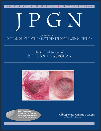Prognostic Value of Portal Pressure at the Time of Kasai Operation in Patients With Biliary Atresia
Supported by Programme Hospitalier de Recherche Clinique National 2002.
ABSTRACT
Aim:
To examine the prognostic value of portal pressure at the time of Kasai operation in patients with biliary atresia (BA).
Patients and Methods:
All 127 patients with BA, born between 1991 and 1996, who underwent a Kasai operation in Bicêtre Hospital were studied. Intraoperatively, the umbilical vein was catheterised and a portal pressure index (PPI), defined by the height of the physiologic saline column above the liver surface level, was measured. Overall patient survival, survival with native liver (SNL) and, in patients living with their native liver, survival without significant portal hypertension (SwsPHT) were calculated by Kaplan-Meier method and compared by univariate and multivariate analyses.
Results:
Measurement of PPI was successful in 113/127 patients (89%) without complication. Median PPI was 15 cm (range, 5–35). Portal pressure index was positively correlated with age at surgery and histological severity of liver fibrosis. Ten-year overall patient survival was 78.2%; 10-year SNL was 35.7%. In patients living with their native liver, 5- and 10-year SwsPHT were 65.3% and 43.6%, respectively. Portal pressure index >15 cm, complete extrahepatic BA and polysplenia were independently associated with a worse SNL. Portal pressure index >15 cm and the absence of postoperative normalisation of bilirubin were independently associated with a worse SwsPHT.
Conclusion:
Biliary atresia patients with elevated portal pressure at the time of Kasai operation have lower chances of success of this procedure and a higher risk of developing portal hypertension, even if bilirubin levels normalise after the operation. Measurement of PPI was simple and safe and better predicted the postoperative outcome than did the histological scores of liver fibrosis.




